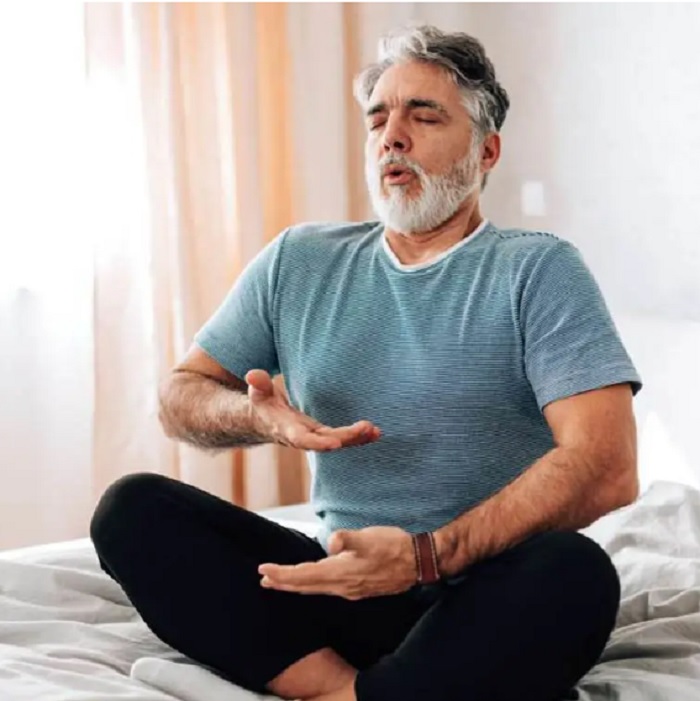
Proper Breathing, Peaceful Living: Conquering Stress Through Breath Power
Barkat Health & Pharmaceutical Group: In the contemporary world, stress and anxiety have emerged as some of the most pressing and pervasive challenges affecting individuals. These mental health issues can profoundly disrupt an individual’s quality of life, interpersonal relationships, and professional performance.
Chronic stress and anxiety are not merely transient conditions; they are linked to a range of physical and psychological disorders, including depression, cardiovascular diseases, sleep disturbances, hypertension, and compromised immune function. As such, identifying and implementing effective strategies to mitigate stress and manage anxiety is of paramount importance. Among the most accessible and efficient approaches to addressing stress is the use of breathing techniques.
Breathing is an inherent and involuntary process vital to life. However, with proper training, this natural function can be harnessed as a powerful tool for promoting mental relaxation and alleviating stress. Scientific studies have demonstrated that conscious breath control can significantly reduce anxiety, enhance focus, foster mental tranquility, and mitigate stress-induced physiological responses.
This report delves into various breathing techniques and examines their potential to reduce stress and anxiety.
Ubiquity of Stress in Modern Life
Stress has become an unavoidable aspect of daily existence in the modern age. Several factors in contemporary society exacerbate stress and anxiety among individuals. Among the most influential contributors are the pressures of the workplace, the fast-paced nature of urban living, constant exposure to negative news through media, economic uncertainty, and personal relationship challenges. These stressors continuously impact both the mental and physical health of individuals, leading them to experience heightened levels of stress and anxiety as they attempt to navigate these pressures.
Studies indicate that, despite significant advances in various fields, modern life offers limited opportunities for rest and relaxation. Consequently, stress—along with its associated challenges, such as sleep disorders and psychological strain—has become a serious public health concern. In light of this, the need for effective coping mechanisms is greater than ever. Breathing techniques, as simple yet accessible tools, offer a promising solution for alleviating the pervasive stress that individuals encounter daily.
Nervous System in Stress Response
To understand how breathing techniques can influence stress and anxiety reduction, it is essential to first consider the nervous system and its responses to stress. The human nervous system is divided into two primary components: the sympathetic nervous system and the parasympathetic nervous system.
The sympathetic nervous system governs the body’s response to stress and crisis situations. In these moments, the body instinctively reacts to perceived threats by activating processes such as increased heart rate, elevated blood pressure, and a surge in energy. This reaction—often referred to as the “fight or flight” response—prepares the body to respond swiftly to danger.
In contrast, the parasympathetic nervous system is responsible for restoring balance and inducing a state of calm. When the body enters a restful state, the parasympathetic system becomes activated, leading to a reduction in heart rate, lower blood pressure, and the alleviation of stress-induced physiological responses. This system aids in the body’s recovery, helping it regain equilibrium.
By engaging in controlled breathing techniques, individuals can directly influence both of these systems. Through deep and intentional breathing, the parasympathetic nervous system can be activated, thereby reducing the activity of the sympathetic system. This process helps diminish the intensity of stress and anxiety, promoting a return to a state of calm.
Breathing’s Impact on Anxiety Reduction
Breathing techniques exert their effects on stress and anxiety in multiple ways. Below are some of the most significant benefits of proper breathing in mitigating stress and anxiety:
-
Lowering Heart Rate & Blood Pressure
One of the immediate effects of deep, controlled breathing is the reduction of heart rate and blood pressure. When an individual is under stress, heart rate and blood pressure naturally increase, often exacerbating feelings of anxiety and unease. Through deliberate breathing exercises, particularly deep breathing, individuals can slow their heart rate and normalize blood pressure, fostering a sense of calm. -
Reducing Stress Hormones
Stress hormones, such as cortisol and adrenaline, play a pivotal role in triggering the body’s stress response. These hormones are released during stressful situations and contribute to elevated heart rate, blood pressure, and breathlessness. Breathing techniques can help reduce the production of these hormones. For example, controlled deep breathing exercises have been shown to lower cortisol levels, thereby alleviating stress and anxiety. -
Enhancing Focus & Attention
In addition to mitigating stress, breathing techniques can also enhance concentration and mental clarity. By focusing on the breath, individuals can detach from negative thoughts and anxiety-inducing stimuli, allowing their minds to reset. This mental shift enhances the ability to focus on tasks and improve problem-solving capabilities. -
Activating Parasympathetic Nervous System
As discussed earlier, controlled breathing can activate the parasympathetic nervous system, promoting relaxation. This activation helps the body return to a state of calm, reducing stress-induced responses and contributing to overall tranquility.
Breathing Techniques for Stress Reduction
Several breathing techniques are designed specifically to control and reduce stress. Below, we present some of the most effective and widely used methods for stress and anxiety relief:
-
Deep Breathing:
Deep breathing is one of the most straightforward yet powerful techniques for stress reduction. In this practice, the individual inhales slowly through the nose, allowing the diaphragm to expand, and then exhales gently and completely through the mouth. This technique helps lower heart rate and blood pressure, restoring the body to a calm state. -
4-7-8 Breathing:
In this technique, the individual inhales for 4 seconds, holds the breath for 7 seconds, and then exhales slowly for 8 seconds. This pattern is particularly effective for quickly alleviating acute anxiety. Research shows that this method can significantly calm the nervous system and reduce feelings of anxiety. -
Box Breathing:
Box breathing involves a rhythmic pattern: inhale for 4 seconds, hold for 4 seconds, exhale for 4 seconds, and pause for 4 seconds before repeating the cycle. This technique is particularly useful for alleviating anxiety and improving concentration, especially in high-stress situations. -
Diaphragmatic Breathing:
Diaphragmatic breathing involves inhaling deeply from the diaphragm, causing the abdomen to rise, and then exhaling fully through the diaphragm. This method increases oxygen intake, helps calm the nervous system, and is highly effective in reducing anxiety and stress.
Scientific Evidence on Breathing Techniques
A growing body of scientific research has confirmed that breathing techniques not only help reduce stress and anxiety but also have long-term positive effects on both mental and physical health. Studies indicate that regular practice of breathing exercises can lower levels of stress hormones and mitigate the negative impact of chronic stress. Numerous studies have validated the effectiveness of deep breathing, 4-7-8 breathing, and other techniques in alleviating anxiety and enhancing focus.
Conclusion
Breathing techniques are simple yet profoundly effective tools for reducing stress and anxiety. By directly influencing both the nervous and physiological systems, these techniques promote a state of calm and mental clarity. Regular practice of these techniques enables individuals to manage stress more effectively, leading to improved overall well-being and a healthier, more balanced life.
-
Voice of Life in World of News — Redefining Health Journalism in the Information Age

-
Senior Health Officials & Barkat GD Visit Sobhan Oncology

-
Barkat Group specialized meeting

-
Safa Appointed as Barekat General Director

-
Barekat Health & Pharmaceutical Group at the 10th Iran Pharma Exhibition

-
Ali Safa visits Sobhan Oncology & Sobhan Darou

-
Pirsalehi & Safa visit Saman Daroo 8 Knowledge-based Company

-
Barekat Managing Director Visits Samen Pharmaceutical Company

